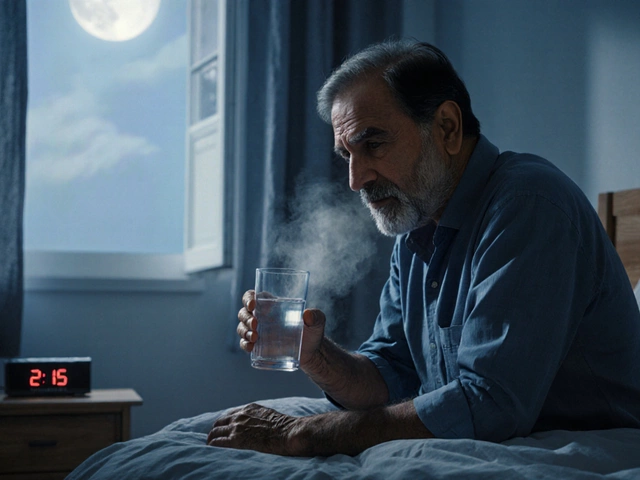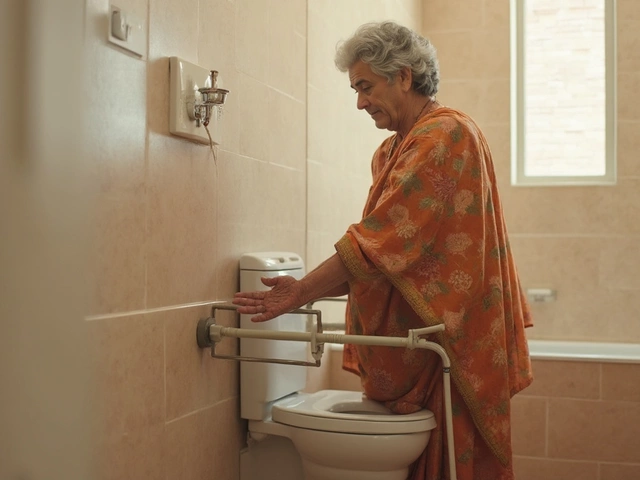
Feeling like therapy might not be cutting it for you? You're not alone. A lot of us have started to ask ourselves whether there's something else out there that provides the support and growth we need. Spoiler: there is.
Imagine finding a way to navigate life that's not just about weekly sit-downs with a therapist. Sure, therapy works wonders for many, but what if you're looking for something more, something that fits like your favorite pair of jeans? Let's dive into other avenues of healing that could just be the answer you're searching for.
Consider alternative approaches—like the power of mindfulness practices or the comfort found in connecting with others who really get it. Some folks swear by meditation, saying it changes the very fabric of how they cope with life's ups and downs. And it's not just about sitting in silence; there are countless ways to integrate mindfulness into daily life.
Building a community, whether it's through support groups or just casual meet-ups with like-minded people, can offer a sense of belonging that heals. Beyond just talking, being part of a community provides validation and understanding that can lift you in ways traditional therapy may not.
- Alternative Approaches to Therapy
- The Role of Mindfulness and Meditation
- Community and Connection
- Personalized Plans for Growth
Alternative Approaches to Therapy
When you're tackling life's challenges, it's easy to believe that traditional therapy is the only route. But there's a whole world of therapy alternatives that can complement or even replace conventional therapy methods. Here's a taste of what's out there.
Art and Music Therapy
Did you know that expressing yourself through art and music can be a form of mental health therapy? It's not only a creative outlet but also a way to process emotions without saying a word. Whether you're painting, playing an instrument, or just listening to music, these activities can significantly enhance your emotional well-being.
Outdoor Therapy
Ever felt the calming effect of fresh air and nature? Outdoor therapy taps into that by encouraging activities like hiking, gardening, or even just a walk in the park. Research has shown that being in nature reduces stress and anxiety. Plus, it's free!
Pet Therapy
Ever heard of pet therapy? It's not just about cuddling with adorable animals, although that's a big part. Interaction with pets has been proven to reduce anxiety and alleviate feelings of loneliness. Many therapy centers have begun to incorporate pet therapy sessions, showing how effective this can be.
Group Support Sessions
Sometimes, the best healing comes from others who've walked a mile in your shoes. Group support sessions provide a platform to share experiences and strategies. It fosters a sense of community and belonging, essential for effective healing.
| Therapy Type | Benefits |
|---|---|
| Art and Music Therapy | Emotional expression, stress reduction |
| Outdoor Therapy | Stress reduction, connection with nature |
| Pet Therapy | Reduced anxiety, companionship |
These are just a few examples of how we can think beyond traditional therapy. It's all about finding what speaks to you personally. There's no one-size-fits-all, and these alternatives open up a world of possibilities for personal growth and healing.
The Role of Mindfulness and Meditation
When life gets a bit overwhelming, the buzzwords mindfulness and meditation often pop up. But how do these practices actually help us in our mental health journey?
Diving into mindfulness first—think of it as a practice of staying present. It's not about zoning out from what's happening around you; instead, it's about tuning in. Studies have shown that regular mindfulness can reduce anxiety, help manage stress, and even improve your focus.
Now, meditation goes hand in hand with mindfulness. Whether it's a few minutes of deep breathing or a guided meditation app, this practice can anchor your thoughts and ease that mental chitchat. It’s like giving your brain a much-needed break and some clarity. According to the American Psychological Association, meditation can lead to an increase in overall wellbeing—pretty neat, right?
As Jon Kabat-Zinn, a pioneer in bringing mindfulness to mainstream medicine, says: "The little things? The little moments? They aren't little."
Thinking about fitting mindfulness or meditation into your daily routine? You might be surprised by how easy it can be. Here are a few simple steps:
Ways to Incorporate Mindfulness and Meditation
- Breathe: Start with just a few minutes each morning.
- Walk: Turn a walk into a mindful stroll, paying close attention to each step.
- No-phone zone: Create a small space in your day where screens are off limits, helping you connect with the present moment.
It’s all about finding what works for you. Whether you dive deep into meditation sessions or sprinkle mindful moments throughout your day, the important bit is consistency. Taking small steps can lead to big changes in how you feel and cope.

Community and Connection
Who hasn't felt the magic of a good chat with friends or found comfort in knowing you're surrounded by those who understand you? Carrying on from traditional therapy, finding the right kind of community can be just what the doctor ordered. So, what's cooking in the realm of communal support?
For starters, support groups are a great way to meet others dealing with similar issues. Whether it's a grief group or a club for folks battling anxiety, sharing your story with others who truly get it can be transformative. It’s like group therapy but with a cozier vibe.
Why Community Matters
Studies show that a strong sense of connection to others isn't just a nice-to-have—it's actually crucial for mental health. Regular social engagement can lower stress levels, combat depression, and even improve your lifespan. Yes, those Friday night hangouts actually might be adding years to your life!
Building Connections Offline and Online
Living in the digital age, online communities have become just as significant. Platforms such as forums or even apps like Clubhouse offer spaces to share, learn, and connect without leaving your comfort zone. This can be especially helpful for those who live in remote areas or have mobility challenges.
Tips for Finding Your Tribe
- Identify what kind of support you need—be it emotional, practical, or even just social fun.
- Start local. Check community boards at your local library, coffee shop, or online community calendars.
- Join or start a club that centers around your interests—be it photography, hiking, or book clubs.
- Don't shy away from trying different groups until you find the right fit. It's okay to explore!
So, while therapy has its place, don’t underestimate the power of being part of a community that supports mental health in its own special way.
Personalized Plans for Growth
Not everyone fits the same mold, and that's totally okay. When it comes to mental health, a one-size-fits-all approach might miss some crucial nuances. Personalized plans for growth are all about tailoring strategies to fit your unique needs. Imagine it like crafting your ideal workout plan, but for your mind.
It all starts with knowing what works for you. Some folks find healing in creative pursuits like painting or music, while others might benefit from nature walks or journaling. But how do you get started? Simple: Experiment and observe. Try out different things and note what actually helps you feel better.
Mental health experts recommend setting realistic goals. This could be as small as reading a book on self-improvement or as big as signing up for a course. A well-known therapist, Dr. Carol Dweck, puts it perfectly:
"The view you adopt for yourself profoundly affects the way you lead your life."In other words, embracing a growth mindset can rewire your brain for the better.
Steps to Create Your Personalized Plan
- Assess Your Needs: What are you looking to improve? Is it stress management, self-confidence, or something else?
- Set Measurable Goals: Write down clear, achievable targets. For example, meditate for ten minutes a day for a month.
- Choose Your Methods: Pick activities or therapies that resonate with you, possibly drawing from therapy alternatives you've heard about.
- Track Your Progress: Keep a journal or use an app to note changes in your mood and wellbeing.
- Adjust as Necessary: If something isn't working, don't hesitate to switch it up. Growth is a fluid process.
Beyond the Plan
It's crucial to remember that growth doesn't stop at a checklist. Be open to evolving your plan as you grow. Life throws curveballs, and adapting is a part of the journey. The key is to stay curious and flexible, ready to recalibrate your personal growth journey whenever needed.
Statistics from a study published in 2022 indicate that personalized mental health approaches can lead to a 65% improvement in emotional well-being when consistently applied over a six-month period. This shows the power of crafting a plan that's uniquely your own.





Rohan Talvani
I am a manufacturing expert with over 15 years of experience in streamlining production processes and enhancing operational efficiency. My work often takes me into the technical nitty-gritty of production, but I have a keen interest in writing about medicine in India—an intersection of tradition and modern practices that captivates me. I strive to incorporate innovative approaches in everything I do, whether in my professional role or as an author. My passion for writing about health topics stems from a strong belief in knowledge sharing and its potential to bring about positive changes.
view all postsWrite a comment